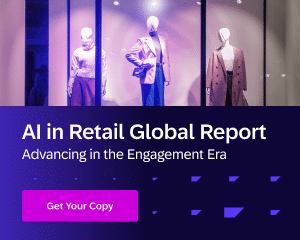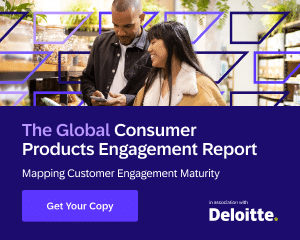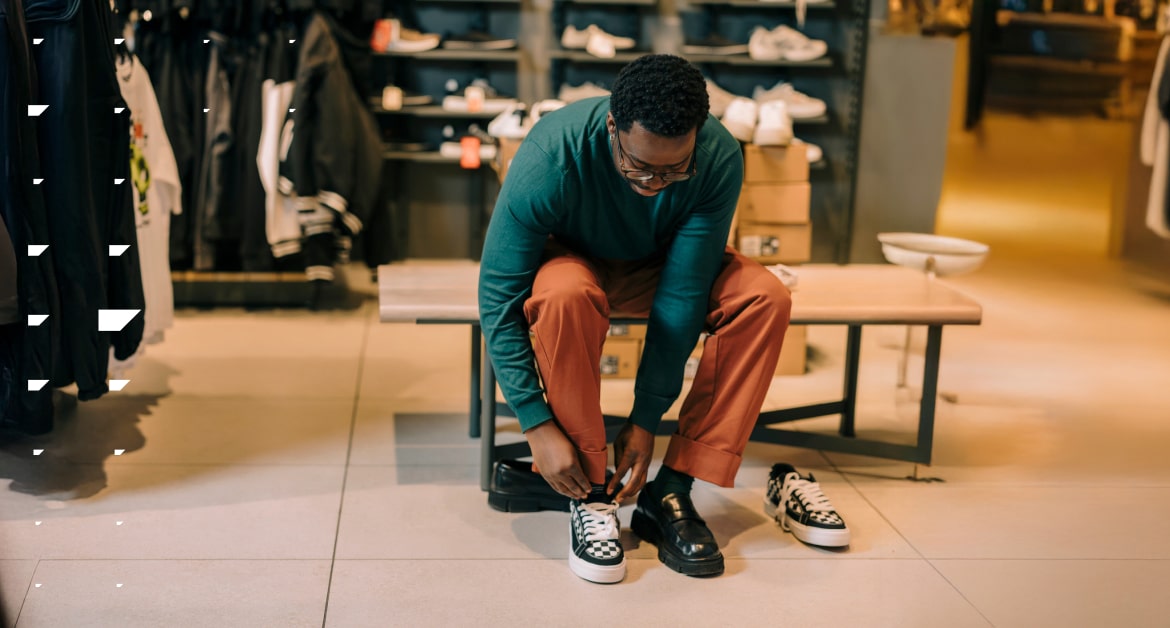“It matters what you buy.”
These words of wisdom came from Eva Kruse, Group SVP of Global Engagement & Impact for PANGAIA, during Day 3 of the Power to the Marketer Festival, hosted by SAP Emarsys in partnership with Vogue Business.
We’re all consumers, and as consumers, we know that what we buy matters to us — we care about the quality of the goods and services we purchase, we care that we’re receiving a good value for our dollars, and we care about our favorite brands.
But Eva — and PANGAIA — would say that it’s also important for us to care about the thought that goes into making our products. Because what we buy matters.
During the Day 3 mainstage keynote of the festival in London, Eva spoke on the topic of Decision Making for a Digital World. She delivered valuable insights and tips for marketers about sustainability and the role that communication plays in the mission for more sustainable practices.
A Little about PANGAIA
PANGAIA is much more than just a fashion retailer. It’s a materials science company focused on promoting “an Earth-positive future.” Their focus is on textile innovation, reducing the use of plastics in fashion, and solving environmental problems not only in the fashion industry but across other industries as well.
PANGAIA strives to create clothing made from innovative elements that are sourced responsibly and are biodegradable, because fabric waste has a massive impact on the environment. PANGAIA uses both next-generation bio-materials and recycled fibers to create their lines of comfortable clothing designs. Each piece of clothing displays a paragraph in small print about what materials the item is made from.
Insights from PANGAIA about Sustainability and Customer Engagement
During her session, Eva spoke passionately and eloquently about the philosophy behind PANGAIA as well as the environmental impact of the fashion industry as a whole. She also discussed the impact we have as individual consumers.
“The fact of the matter is that the fashion industry is one of the world’s largest, and it’s also one of the world’s most resource-intensive. And we’re exploiting human labor globally at an unprecedented scale, and we still are, even if this is more than ten years in. I and many others have been preaching from whatever corner or whatever stage we’ve been allowed to. Yeah. So that’s the situation. So then, the fashion summit developed and became a recurring event, and actually we had a guest at one point in 2016 on a tech panel, Miro Duma, and she founded PANGAIA, and it became a pivoting point in her journey as we’re also thinking about sustainability. We’re rooted at PANGAIA on innovation, trying to bring material science and innovation to the space of fashion. Because I think at the end of the day — and that’s why I like some of Tom’s points about listening to your consumer — that people still want to buy fashion for fun or desire or emotions or because they’re going out on Saturday or for other reasons, maybe not to save the world. So I think [it’s good] if you can combine bringing beautiful products to life but [make] them in materials that are better — and that’s where the innovation and the science part comes in.”
If you want to watch Eva’s complete session, you can! It’s available on-demand on the Power to the Marketer Festival hub page. Simply register for the festival, log in, and watch. Tip: You can skip to timestamp 00:16:10 to pick up right where Eva’s session begins.
Eva went on to speak in depth about how we all can play a part in various ways — sustainability is for everyone at all levels, from entire industries to marketing teams and even individual consumers.
Following are three key takeaways from this insightful interview.
Industry Level: The Luxury Sector Can Lead the Way
“I think [the] luxury sector especially can lead that way, because in the beginning it will have a higher price point.”
Eva made it very clear that the fashion industry has a critical role to play in sustainability, both because it’s an enormous global industry and also because by being that large, it has a significant impact on the environment and socioeconomics.
But precisely because fashion is large and inescapable, that puts it in a position of influence. The luxury sector in particular can become the source of profound impact. New materials and the new science around those materials must be created. The best way to drive down the prices of those new materials is to increase the demand for them, which is something the luxury sector excels at.
Eva herself was, of course, wearing PANGAIA clothing.
“What I’m wearing right now is recycled nylon, and even though it comes from post-consumer waste, so it isn’t taking plastic bottles out of an actual system where they should stay. It’s still nylon. It isn’t good enough. It is a synthetic material at the end of the day. It’s stretched microfibers, and it will never go away. So we are still pursuing to find the right [material]. We have some in our activewear that is a blend and where we get the percentages of the synthetics, or plastics, lower and lower, and I think next year, maybe second half, we’ll actually have a 100% bio-based replacement for synthetic fibers.”
Marketing Level: Marketing about Sustainability Must Be Authentic and Honest
Whether the brand in question is in the luxury fashion sector, casualwear, athleticwear, or even any other business looking to communicate sustainable practices, it’s important for the marketing practices to come across as authentic and honest.
Customers can see through surface-level promises. Eva mentioned that she’s seeing that consumerstend to be “fed up with intentions.” Consumers won’t hesitate to call out a business on marketing tactics that are less than authentic. Eva described an example of one brand that made Kim Kardashian their sustainability ambassador, which prompted negative feedback on social media. “I mean, [Kim Kardashian is] great at many things,” said Eva, “but maybe that particular role doesn’t feel as authentic. And I think there you can maybe find another voice for yourself that has more authenticity.”
Eva’s advice when it comes to sharing your sustainability story:
“The most important thing is to be authentic and honest.”
When it comes to influencers, brands need to align with real activists, not necessarily just popular influencers.
She also went on to say, “I don’t think that perfect should stand in the way of doing good, either. So I definitely think that there’s space for everything and every step that you take, but be transparent about it.”
Another piece of advice Eva had about communication is the importance of keeping your message brief, which can be challenging, as any copywriter knows. It’s up to marketers to find ways to create messages about sustainability that are engaging and easily consumable for customers.
Consumer Level: Every Little Step We Take as Individuals Matters
The following excerpt from Eva’s session packs a profound punch in just 30 seconds:
“If we don’t talk about the difference in products and if we don’t talk about the impact and the sustainability side, how are consumers ever going to know? And then we won’t accelerate the awareness and understanding that there’s [a] difference to product[s] and that it matters what you buy. Because at the end of the day, I think that’s the biggest issue we’re facing, also from a communication point of view, is getting people to actually appreciate that every little step we take as individuals actually matters.”
Eva empathizes with us as individuals — she knows how hard it is to continuously see, day in and day out, how each step makes a difference. Does sorting your garbage matter? Sometimes it may not feel like it, but that’s exactly why she shares these reassuring beliefs that you can make a difference in the world every day.
And this line is worth repeating:
“It matters what you buy.”
Final Thoughts: Make Your Message Count
As a marketer, you’re in a position of influence. You share messages and campaigns that both drive your business and help guide consumer choices. It’s up to you to be authentic, clear, and honest with your audience.
Of course, we happen to know an excellent customer engagement platform that can help you automate content across channels and reach your audience with the right message at the right time.
Are your brand and company working towards a more environmentally friendly future? How are you communicating that goal with your customers?
Just a little food for thought.
Handpicked Related Content:












